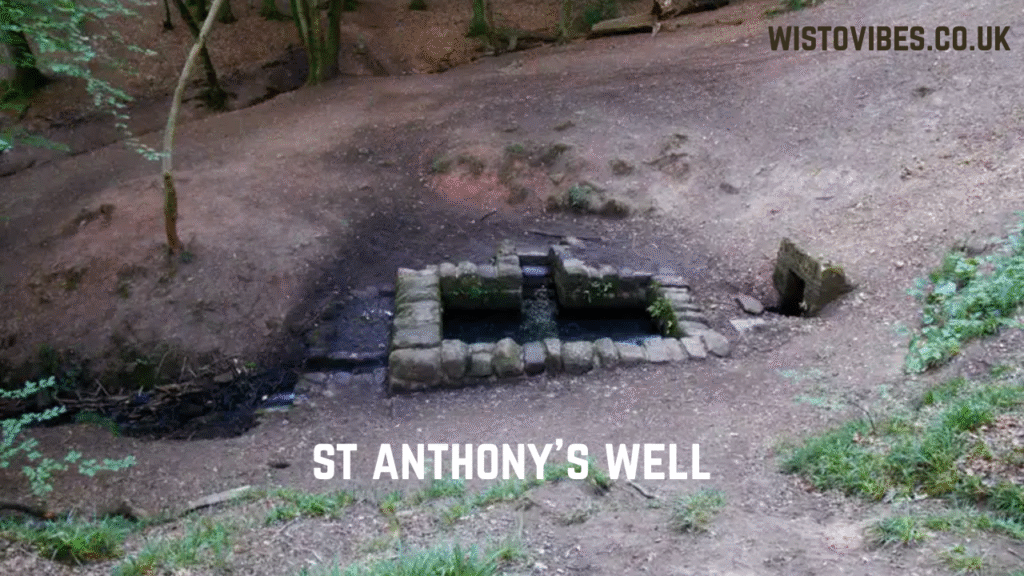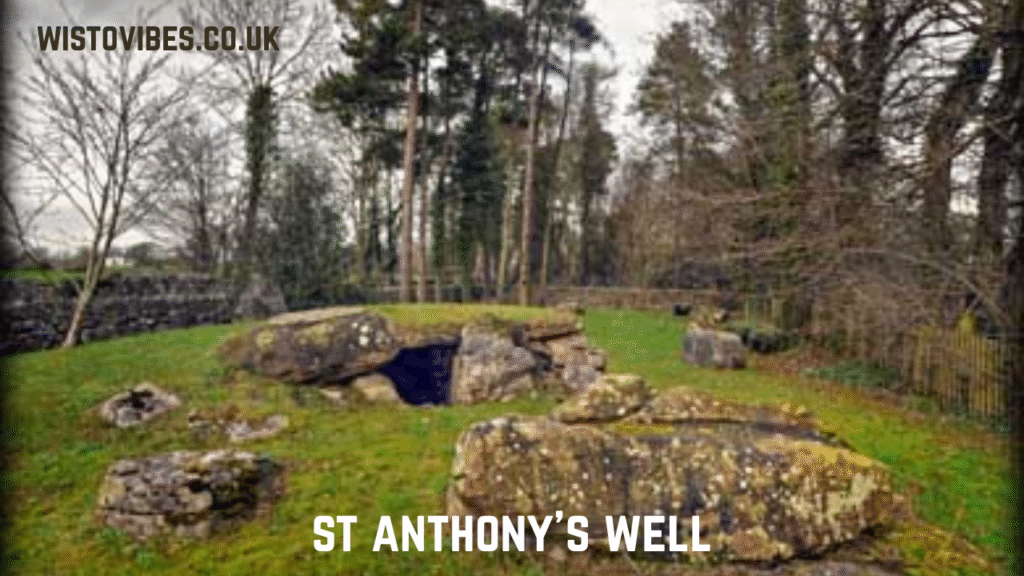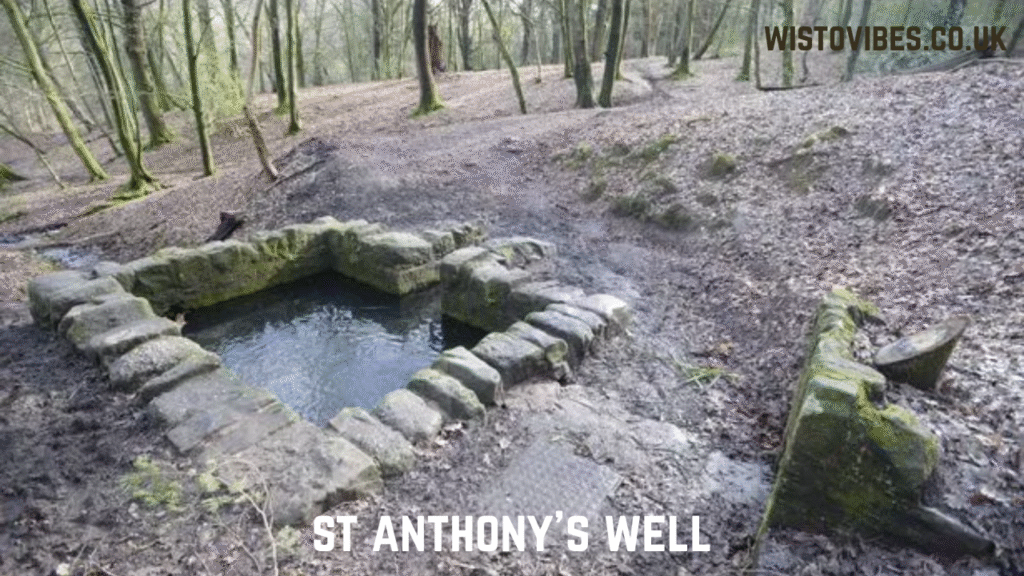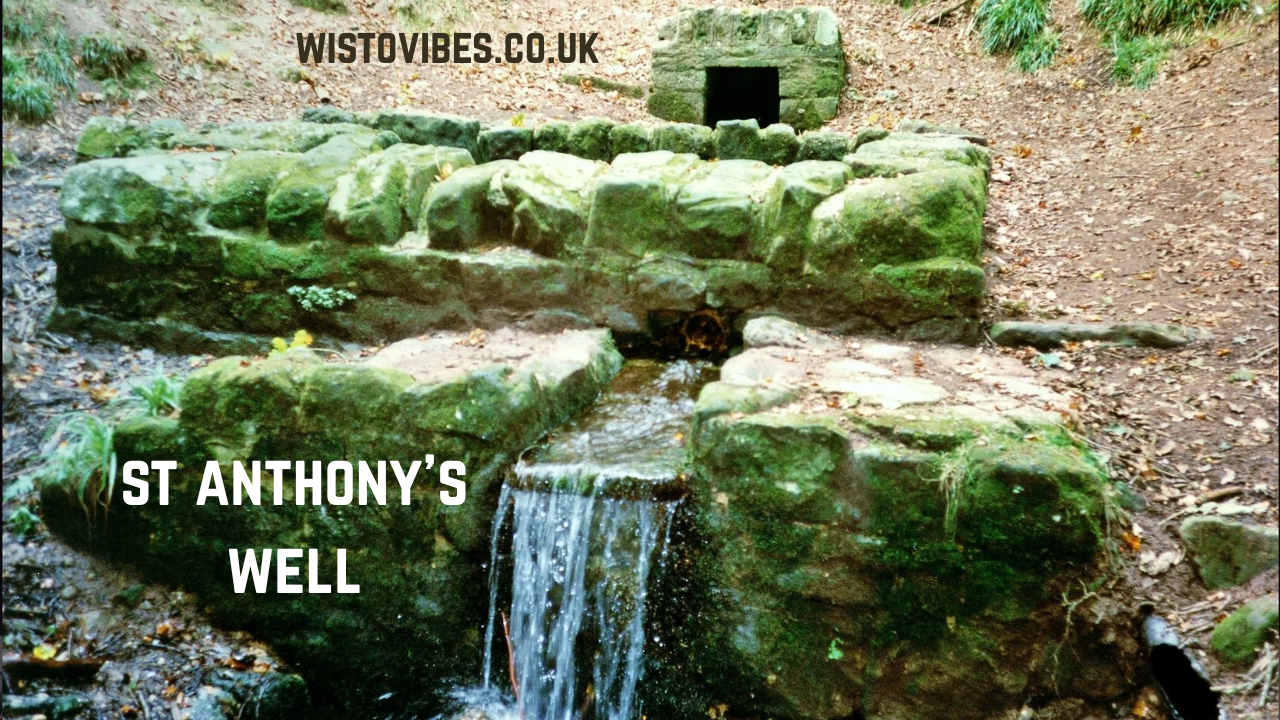St Anthony’s Well is a name that echoes across history, folklore, and spirituality, drawing together threads of tradition, healing, and community memory. For centuries, holy wells like this one have held deep significance in local cultures, often linked with religious figures and saintly devotion. St Anthony’s Well stands out as a striking example of this tradition, offering not only a connection to Christian faith but also an echo of earlier beliefs in the sanctity of natural springs. Known as places of prayer, healing, and contemplation, wells dedicated to saints like Anthony provide an invaluable glimpse into how water was revered as both sacred and practical.
Origins and Early Associations of St Anthony’s Well

The origins of St Anthony’s Well can be traced back to early Christian communities who recognized the value of linking holy figures with natural landmarks. St Anthony himself, often identified as St Anthony the Great or St Anthony of Egypt, was a hermit and ascetic whose example inspired generations of Christians to live lives of discipline and devotion. As Christianity spread across Europe, wells, rivers, and springs were often dedicated to him, marking physical spaces where spiritual nourishment and natural healing could meet. These dedications were not random but stemmed from a profound recognition of water as life-giving, purifying, and holy.
St Anthony and His Symbolic Connection to Water
Water has long been tied to themes of rebirth, renewal, and cleansing, making it a perfect symbol for saints like St Anthony who embodied purity and spiritual discipline. In many traditions, St Anthony’s Well was believed to have healing properties, offering relief from physical ailments and spiritual burdens. Pilgrims and local communities often visited the well, not only for practical water needs but also for blessings, protection, and guidance. This symbolic connection between saint and spring continues to resonate with those who study or visit St Anthony’s Well today, as it represents an enduring union of nature and spirituality.
Healing Powers and Pilgrimage Traditions of St Anthony’s Well

Throughout history, countless accounts describe the healing powers associated with St Anthony’s Well. People suffering from ailments such as skin conditions, fevers, or joint pain would bathe in or drink from the well in hopes of divine intervention. The pilgrimage to the well was often combined with prayers, offerings, or even overnight vigils at the site. These practices highlight the dual role of the well as both a medical and spiritual refuge. The very act of pilgrimage itself was part of the healing process, with the journey symbolizing faith, endurance, and trust in divine mercy.
Folklore and Legends Surrounding St Anthony’s Well
Over centuries, folklore grew around St Anthony’s Well, with stories of miraculous cures, apparitions, and blessings becoming part of local heritage. Some legends suggest that the water glowed under moonlight, while others speak of angels guarding the well at night. These legends were passed down through oral traditions, preserving the well as more than just a natural landmark—it became a sacred story woven into the identity of surrounding communities. Folklore often blended Christian symbolism with older pagan reverence for springs, ensuring that the well remained central in spiritual imagination.
The Role of St Anthony’s Well in Local Communities

Beyond its spiritual value, St Anthony’s Well often served as a social and cultural hub for the communities around it. Festivals and gatherings were sometimes held near the well, particularly on feast days connected with St Anthony. These occasions offered not only moments of worship but also opportunities for strengthening communal bonds. The well symbolized unity, where people of different walks of life came together under the shared belief in healing waters and saintly intercession. Its importance extended far beyond the personal into the collective sphere of local identity.
Natural Beauty and Environmental Setting of St Anthony’s Well
Most holy wells, including St Anthony’s Well, are located in serene natural settings, often surrounded by woodlands, hills, or open fields. The beauty of these landscapes added to the sacred aura of the site, creating a peaceful backdrop for reflection and prayer. Visitors often reported feeling an overwhelming sense of calm when arriving at the well, as if nature itself participated in the sanctity of the place. This natural beauty was not incidental—it was part of the well’s power, reinforcing the belief that the divine and the natural world were deeply interconnected.
Religious Practices at St Anthony’s Well
Religious rituals surrounding St Anthony’s Well varied from place to place, but they typically included prayers, candle-lighting, or making the sign of the cross with the water. Some traditions encouraged tying ribbons or pieces of cloth to nearby trees as offerings, symbolizing prayers left in the hands of the saint. Others involved taking small amounts of water home for blessings or using it in church services. These practices gave people tangible ways to connect their faith with the physical environment, turning a simple well into a center of spiritual devotion.
Preservation of St Anthony’s Well Across Centuries
Despite the changing tides of history, many St Anthony’s Wells survived thanks to the devotion of local people who cared for them. During periods of religious suppression, such as the Reformation, wells often faced neglect or destruction, yet some endured quietly, protected by folk traditions and memory. In later centuries, antiquarians and historians rediscovered and documented these wells, ensuring that their legacy was preserved. Today, conservation efforts continue, with local groups and heritage organizations recognizing the cultural and historical importance of sites like St Anthony’s Well.
St Anthony’s Well as a Symbol of Faith
St Anthony’s Well embodies more than water and stone; it stands as a symbol of enduring faith. For believers, the well is a reminder of God’s provision and the saint’s intercession. Even for those outside religious traditions, the well represents humanity’s timeless need for hope, healing, and meaning. The act of visiting a sacred well transcends dogma, drawing together spiritual seekers, historians, and nature lovers alike. Its symbolism remains relevant, offering a bridge between the ancient past and the present moment.
Cultural Heritage and St Anthony’s Well
Heritage is not only about buildings or monuments—it also includes traditions, practices, and sacred places like St Anthony’s Well. Recognizing the well as part of cultural heritage allows us to appreciate the ways communities preserved spiritual connections through physical sites. It also highlights the blending of Christian and pre-Christian elements in European history, showing how beliefs evolved while still retaining respect for natural springs. Cultural heritage surrounding St Anthony’s Well continues to inspire artists, writers, and researchers who explore its many layers of meaning.
St Anthony’s Well in Literature and Art
Over the centuries, sacred wells like St Anthony’s have appeared in literature, poetry, and visual art. Writers often used wells as metaphors for depth, purity, or hidden wisdom, while painters and illustrators depicted them as idyllic sites of serenity and devotion. The artistic representation of St Anthony’s Well reflects both its physical presence and its spiritual symbolism. These works helped keep the memory of the well alive, transmitting its meaning across generations and beyond the boundaries of its immediate community.
Pilgrimage Routes and St Anthony’s Well
St Anthony’s Well often lay along established pilgrimage routes, drawing visitors from distant regions who included it as a sacred stop. Pilgrims brought their stories, hopes, and traditions, enriching the cultural fabric around the well. In return, they carried home tales of healing and spiritual encounter, spreading the reputation of the well far beyond its geographic limits. These pilgrimage routes contributed to a shared sense of sacred geography, linking wells, shrines, and churches into networks of faith and devotion.
Symbolism of Wells in Christian Spirituality
To fully understand St Anthony’s Well, one must recognize the broader symbolism of wells in Christian spirituality. Wells are places of encounter—Jacob met Rachel at a well, Jesus spoke to the Samaritan woman at a well, and water is a central motif throughout Scripture. By associating wells with saints like Anthony, Christians embedded their faith into the natural world, making sacred spaces accessible in daily life. St Anthony’s Well thus participates in a larger biblical and theological tradition where water symbolizes God’s life-giving presence.
The Modern Experience of St Anthony’s Well
In modern times, St Anthony’s Well continues to attract visitors, though their motivations may vary. Some come seeking religious connection, others historical curiosity, and many simply appreciate the natural tranquility of the site. Modern visitors often describe the well as a place of reflection and escape from the noise of daily life. This diversity of experience shows that while religious practices may evolve, the fundamental human attraction to sacred wells remains constant.
Tourism and Local Economy Around St Anthony’s Well
The presence of a historic well like St Anthony’s can contribute to local tourism and economic development. Visitors bring revenue to surrounding areas, supporting hospitality, guided tours, and heritage projects. At the same time, this raises important questions about balancing tourism with preservation, ensuring that the sacred nature of the well is not diminished by commercialization. Communities often navigate this balance carefully, recognizing both the economic benefits and the spiritual responsibility of protecting St Anthony’s Well.
Environmental Awareness and St Anthony’s Well
As global awareness of environmental issues grows, sacred wells like St Anthony’s take on new relevance. They remind us of the essential value of clean water, respect for natural resources, and harmony with the earth. Protecting wells becomes not only a matter of cultural heritage but also of ecological responsibility. By linking environmental awareness with spiritual traditions, St Anthony’s Well can inspire sustainable practices and renewed respect for the planet’s gifts.
Comparative Study with Other Holy Wells
St Anthony’s Well can also be understood by comparing it with other holy wells dedicated to saints across Europe. While each well has its unique stories and rituals, common themes emerge: healing, community gathering, pilgrimage, and reverence for water. This comparative perspective highlights the universality of the human impulse to sanctify natural springs, showing that St Anthony’s Well is part of a larger global pattern of sacred geography.
Future of St Anthony’s Well in a Changing World
As society changes, so too does the way people relate to sacred sites like St Anthony’s Well. Technology, urbanization, and shifting religious practices all affect how the well is experienced and preserved. Yet its future remains promising, as interest in heritage, spirituality, and nature continues to grow. With proper care and recognition, St Anthony’s Well will endure as both a historical landmark and a living source of inspiration for generations to come.
FAQs
What is St Anthony’s Well known for?
It is renowned for its association with healing, pilgrimage, and the legacy of St Anthony.
Why is water from St Anthony’s Well considered special?
Tradition holds that its waters possess curative and spiritual powers, symbolizing renewal and blessing.
Is St Anthony’s Well still visited today?
Yes, it remains a site of historical interest, cultural pride, and spiritual reflection.
What does St Anthony’s Well symbolize in broader terms?
It symbolizes humanity’s deep connection to water, faith, and the natural world as sources of life and meaning.
Conclusion
St Anthony’s Well is more than a physical spring; it is a testament to centuries of belief, tradition, and reverence for the sacred in nature. Its story reflects the intersection of faith, folklore, and cultural heritage, reminding us of the timeless human quest for healing and hope. As long as people seek meaning in sacred spaces, St Anthony’s Well will continue to flow, both as a source of water and as a symbol of enduring spirituality.
Read More: Megalithic Portal Exploring Ancient Stone Structures and Human Heritage




